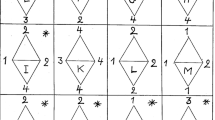Abstract
Recent trends towards an e-Science offer us the opportunity to think about the specific epistemological changes created by computational empowerment in scientific practices. In fact, we can say that a computational epistemology exists that requires our attention. By ‘computational epistemology’ I mean the computational processes implied or required to achieve human knowledge. In that category we can include AI, supercomputers, expert systems, distributed computation, imaging technologies, virtual instruments, middleware, robotics, grids or databases. Although several authors talk about the extended mind and computational extensions of the human body, most of these proposals don’t analyze the deep epistemological implications of computer empowerment in scientific practices. At the same time, we must identify the principal concept for e-Science: Information. Why should we think about a new epistemology for e-Science? Because several processes exist around scientific information that require a good epistemological model to be understood.
Similar content being viewed by others
Notes
”Science and Democratic Social Structure” in Social Theory and Social Structure—Enlarged Edition, New York: The Free Press, 1968. The article was first published in 1942 as “A Note on Science and Democracy”, Journal of Legal and Political Sociology 1: 115–126.
Reliable Knowledge, Cambridge University Press, 1978. pp. 6–8.
Tichy (1998) 33.
Garbage In, Garbage Out (abbreviated to GIGO) is an aphorism in the field of computer science. It refers to the fact that computers, unlike humans, will unquestioningly process the most nonsensical of input data and produce nonsensical output. It was most popular in the early days of computing, but has fallen out of use as programs have become more sophisticated and now usually have checks built into reject improper input. Font: http://www.en.wikipedia.org/wiki/Garbage_in,_garbage_out.
References
Bynum, T. W., & Moor, J. H. (1998). The digital phoenix. How computers are changing philosophy. UK: Blackwell.
Capshew, J. H., & Rader, K. A. (1992). Big science: Price to the present. Osiris, 2(7), 14–22.
Castells, M. (1996). The rise of the network society. Oxford: Blackwell.
Clark, A., & Chalmers, D. (1998). Embodied, situated and distributed cognition. In W. Bechtel, G. Graham, et al. (Eds.), A companion to cognitive science. Malden (MA): Blackwell.
Clark, A. (2003). Natural-born cyborgs. Minds, technologies, and the future of human intelligence, UK: Oxford University Press.
Floridi, L. (2001) Information ethics: An environmental approach to the digital divide, Philosophy in the Contemporary World, Volume 9 (1: Spring-Summer).
Floridi, L. (2002). What is the philosophy of information? Metaphilosophy, 33(1–2), 123–145.
Floridi, L. (2003). Two approaches to the philosophy of information. Minds and Machines, 13(4), 459–469.
Giere, R. (2003). The role of computation in scientific cognition. Journal of Experimental and Theoretical Artificial Intelligence, 15, 195–202.
Humphreys, P. (2004). Extending ourselves. Computational science, empiricism and scientific method. USA: OUP.
Hutchins, E. (1995). Cognition in the wild. Cambridge, MA: MIT Press.
Knight, J. C., & Leveson, N. G. (1986). An experimental evaluation of the assumption of independence in multi-version programming, IEEE Transactions on Software Engineering., Jan: 96-109.
Landow, G. P. (Ed.). (1994). Hyper/Text/Theory. USA: Johns Hopkins University Press.
Langley, P. (2000). The computational support of scientific discovery. International Journal of Human–Computer Studies, 53(3), 393–410.
Latour, B. (1986). Visualization and cognition: Thinking with eyes and hands. Knowledge and Society, 6, 1–40.
Mitcham, C. (1994). Thinking through technology. The path between engineering and philosophy. Chicago: Chicago University Press.
Norman, D. A. (1997). The invisible computer. Cambridge, Massachusetts: MIT Press.
Quinlan, J. R. (1979). Discovering rules from large collections of examples: A case study. In D. Michie (Ed.), Expert systems in the micro-electronic age (pp. 168–201). Edinburgh: Edinburgh University Press.
Rapp, D. N., et al. (2003). The impact of digital libraries on cognitive processes: Psychological issues of hypermedia. Computers in Human Behavior, 19, 609–628.
Rouet, J.-F. (1996). Hypertext and cognition. USA: Lawrence Erlbaum Associates.
Szpiro, G. G. (2003). Kepler’s conjecture. How some of the greatest minds in history helped solve one of the oldest math problems in the world. USA: Wiley.
Thagard, P. (1988). Computational philosophy of science. Cambridge (MA): MIT Press.
Tichy, W.F. (1998). Should computer scientists experiment more? Computer, 32-40.
Valdés-Pérez, R. E. (1999). Principles of human–computer collaboration for knowledge discovery in science. Artificial Intelligence, 107, 246–335.
Vallverdú, J. (2007). Hypertextual thoughts. Revista Portuguesa de Filosofia, 63, 703–720.
Wilson, R. (2003). Four colors suffice: How the map problem was solved. USA: Princeton University Press.
Acknowledgment
This is an ongoing project I am developing at my university. This research has been developed under the main activities of the TECNOCOG research group (UAB) about Cognition and Technological Environments, [HUM2005-01552], funded by MEC (Spain).
Author information
Authors and Affiliations
Corresponding author
Rights and permissions
About this article
Cite this article
Vallverdú i Segura, J. Computational Epistemology and e-Science: A New Way of Thinking. Minds & Machines 19, 557–567 (2009). https://doi.org/10.1007/s11023-009-9168-0
Published:
Issue Date:
DOI: https://doi.org/10.1007/s11023-009-9168-0




